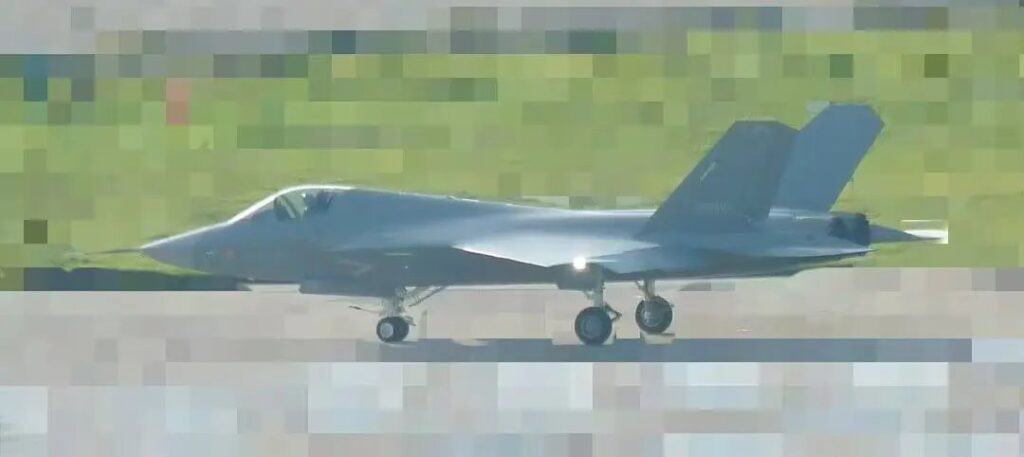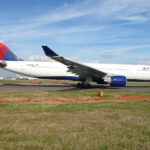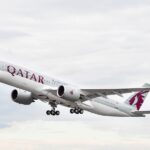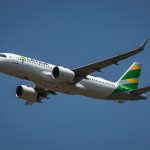New images of one of the J-35 prototypes have appeared on Chinese social networks, evidence that the development program continues to advance at a good pace.
China, from time to time, makes its defense progress known by leaking poor quality images of the prototypes of its military aircraft under development on the social networks it controls.
More pics of J-35 😎 pic.twitter.com/97Dv7ZbZZU
— 彩云香江 (@louischeung_hk) January 2, 2023
A series of flight test images surfaced of what could be the third J-35 prototype, with a new low-visibility paint scheme. Or it could be a new prototype.
In mind that recently many faked and manipulated images on modern Chinese types have been posted, I‘m not entirely sure if this new J-35 is legit 🤔 … but I think it is.😉
(Image via @鼎盛风清 from Weibo) pic.twitter.com/3CFRu04rh0
— @Rupprecht_A (@RupprechtDeino) January 2, 2023
The People’s Liberation Army Navy (PLAN) is about to incorporate its third aircraft carrier, the Type 003 Fujian, designed and built entirely in China and the first to use electromagnetic catapults for the conventional take-off of its aircraft, or CATOBAR (Catapult Assisted Take-Off But Arrested Recovery).
See also: The formidable Carrier Air Wing of China’s future Type-003 aircraft carrier
According to official information, the Fujian will enter service this year, and is expected to focus on sea trials and tests during 2023. And no doubt the J-35 will be part of those tests.
China's 3rd aircraft carrier, the Fujian, will focus on tests and sea trials in 2023(1)#Fujian #China #Aircraft pic.twitter.com/hSXpE3jU2c
— China Perspective (@China_Fact) January 2, 2023
From J-31 to J-35
Born as the Shenyang J-31, it was the second stealth fighter designed in China, developed on Shenyang’s own account for the Liberation Army Air Force (PLAAF) and for export, under the designation FC-31 Gyrfalcon. However, the model only attracted the attention of the Navy, which required a new-generation fighter to equip its future CATOBAR aircraft carriers.
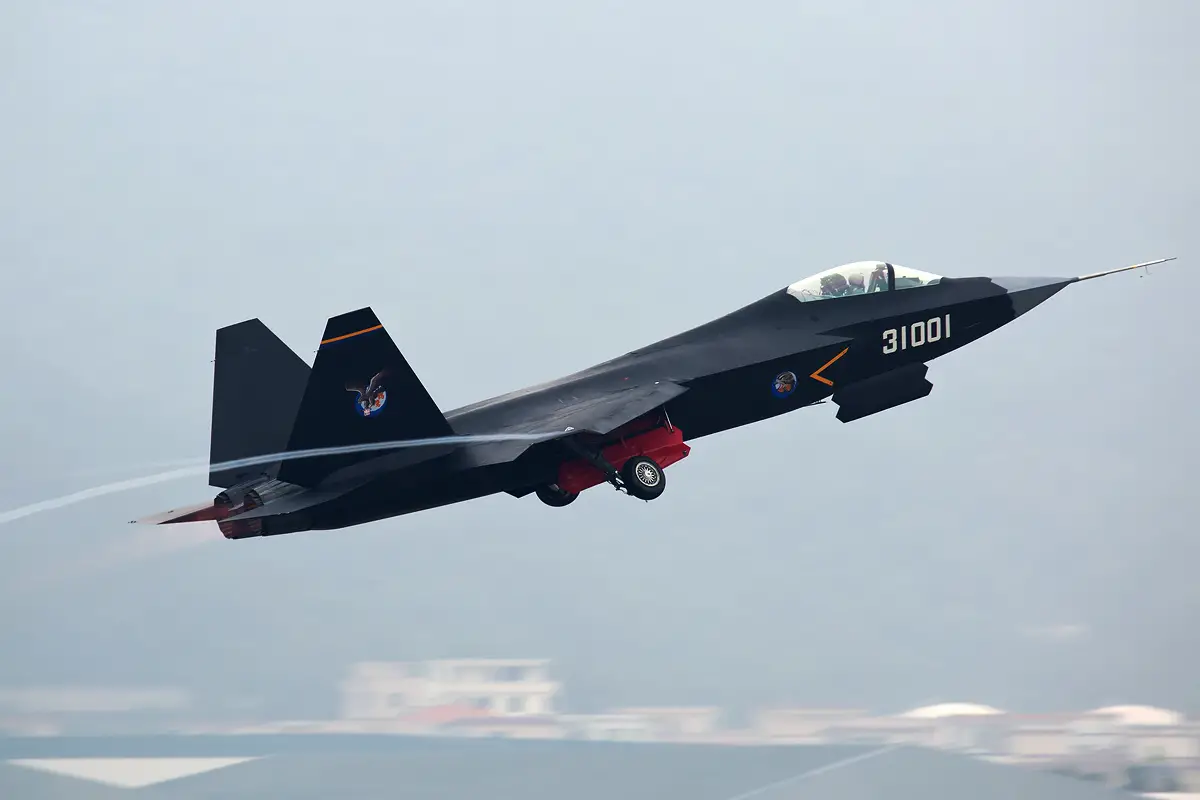
It is a medium-weight twin-engine aircraft, similar in category to the F-35. In fact, about 12 years ago, a series of clever cyberespionage maneuvers orchestrated by China took place in the United States, which managed to steal several Teras of confidential information from American weapons systems, including blueprints and other relevant data from the F-22 and F-35. And so, the J-31 design evolved, benefiting from this information.
In its current configuration, the J-35 is equipped with a pair of WS-21 engines, a variant derived from the earlier WS-13E, which in turn is the Chinese version of the Russian RD-93, used on the JF-17 Thunder. The WS-21 would have greater power than previous models, feature serrated engine exhausts, to reduce its radar and heat signature, and possibly have adaptations to better operate in the marine environment.
The aircraft’s one-piece cockpit is undeniably similar to that of the F-35. It would also have an IRST or EOTS-type optronics system under its nose and a crew boarding ladder similar to those of the U.S. fighter.
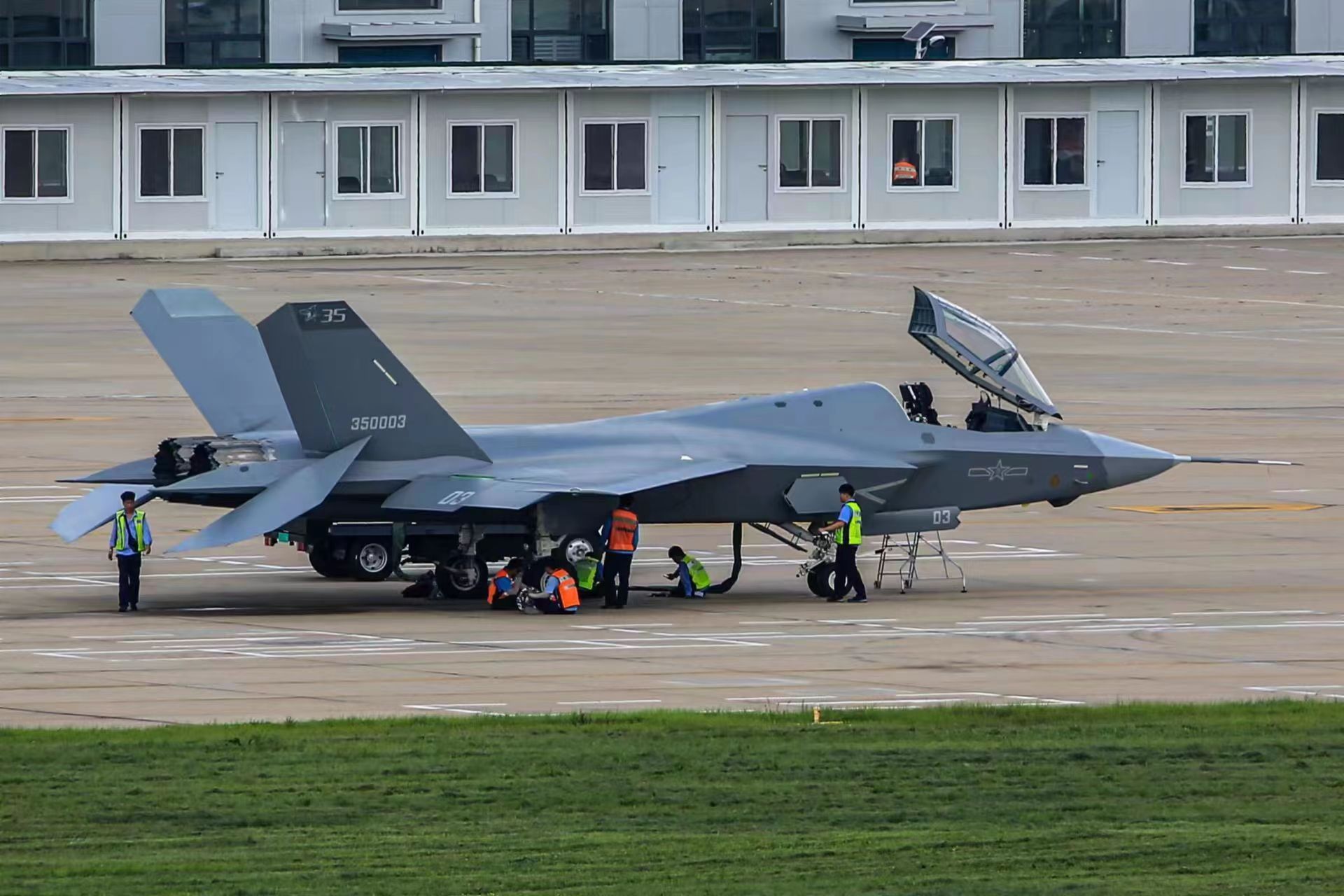
The J-35 has an internal weapons bay with an estimated payload capacity of 2,268 kg, with six hardpoints for air-to-air missiles or air-to-surface weaponry. When the mission does not require the highest degree of stealth, this weapons capacity can be augmented by six additional hardpoints on the wings.
According to information provided by AVIC, the J-31/FC-31 has a maximum take-off weight (MTOW) of 28 metric tons, an operational ceiling of 15 kilometers and a maximum speed of Mach 1.8, or 2,205 kilometers per hour, with an estimated range of 2,000 kms.
In contrast, the J-35 developed for the PLAN appears to be slightly larger, with greater internal fuel capacity, and overall evidences a more refined stealth design. Of course, it has the necessary modifications to operate from an aircraft carrier, such as a tail arresting hook, wings with folding mechanism and a reinforced forward landing gear adapted for catapult takeoff.
This will undoubtedly be a year of many new developments for the Chinese Navy, and in particular for its new aircraft carriers and its future embarked combat wing.

